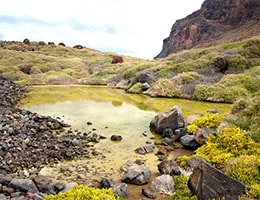 The term silt , which derives from the Latin caenum , refers to the soft consistency mud found in humid places and on the beds of lagoons and rivers . The combination of water and earth is known as mud, on the other hand.
The term silt , which derives from the Latin caenum , refers to the soft consistency mud found in humid places and on the beds of lagoons and rivers . The combination of water and earth is known as mud, on the other hand.
Although it is common to use ideas such as silt , mud , clay and sludge as synonyms, silt specifically refers to the mud found in the subsoil or at the bottom of a body of water . In those cases, soil usually mixes with groundwater.
For example: “The little one was jumping for hours in the mud, having fun,” “Be careful not to slip on the mud,” “The boat got stuck in the mud while the young people were trying to cross the lagoon.”
Due to its consistency, when a large amount of silt accumulates it can be difficult to advance over it. A person who sinks his feet into the mud in this way may slip or have to make a great effort to lift his feet and take steps. If the water level is low in a river or lagoon, it is also possible for a boat to become stranded due to silt.
There is a particular type of silt known as lama , which is not used in everyday speech. It is specifically the silt that remains at the bottom of places where there has been water for a long time. Its composition is not the same in all places, since it depends on the parts through which the currents have passed and the type of land they have washed.
Generally, this type of silt is a compound of the following materials: humus (or mulch), clay, calcareous soil, and animal and plant remains. Rivers with great flow have large banks at their mouths into the sea, which extend considerably; In Egypt, to cite one case, the fertility of the soil is largely due to the banks formed by the Nile.
 Fertility is one of the fundamental points of lama, since it is a very effective type of fertilizer, especially if it has a high content of plant remains. At the bottom of lagoons or ponds where aquatic plants develop, on the other hand, a slime forms that cannot actually be used for this purpose unless it is left exposed to the open air for a minimum of two years.
Fertility is one of the fundamental points of lama, since it is a very effective type of fertilizer, especially if it has a high content of plant remains. At the bottom of lagoons or ponds where aquatic plants develop, on the other hand, a slime forms that cannot actually be used for this purpose unless it is left exposed to the open air for a minimum of two years.
Something similar happens with sea silt , which can only be used as fertilizer if it is allowed to sit for a couple of years. Silt is defined as a sediment carried by the wind and rivers in suspension, until it is deposited at the bottom of water courses or on surfaces that have been flooded.
Returning to the example of the Nile River, it was common for this combination of matter to be deposited in dry areas after floods, where it formed an excellent fertilizer that was ideal for agriculture in ancient times; However, after building the Aswan Dam, the flow of silt was interrupted.
The concept of mud, on the other hand, can be used symbolically to name that which is dirty, unpleasant, rough or indecorous : “I was lying in the mud because of alcohol, but I managed to get out thanks to the support of my family” , “To develop a political career you have to put your legs in the mud and I am not willing to do it,” “The mud of corruption splashes all the company's directors.”
